This page provides guidance for managing assorted game and wildlife pests, including:
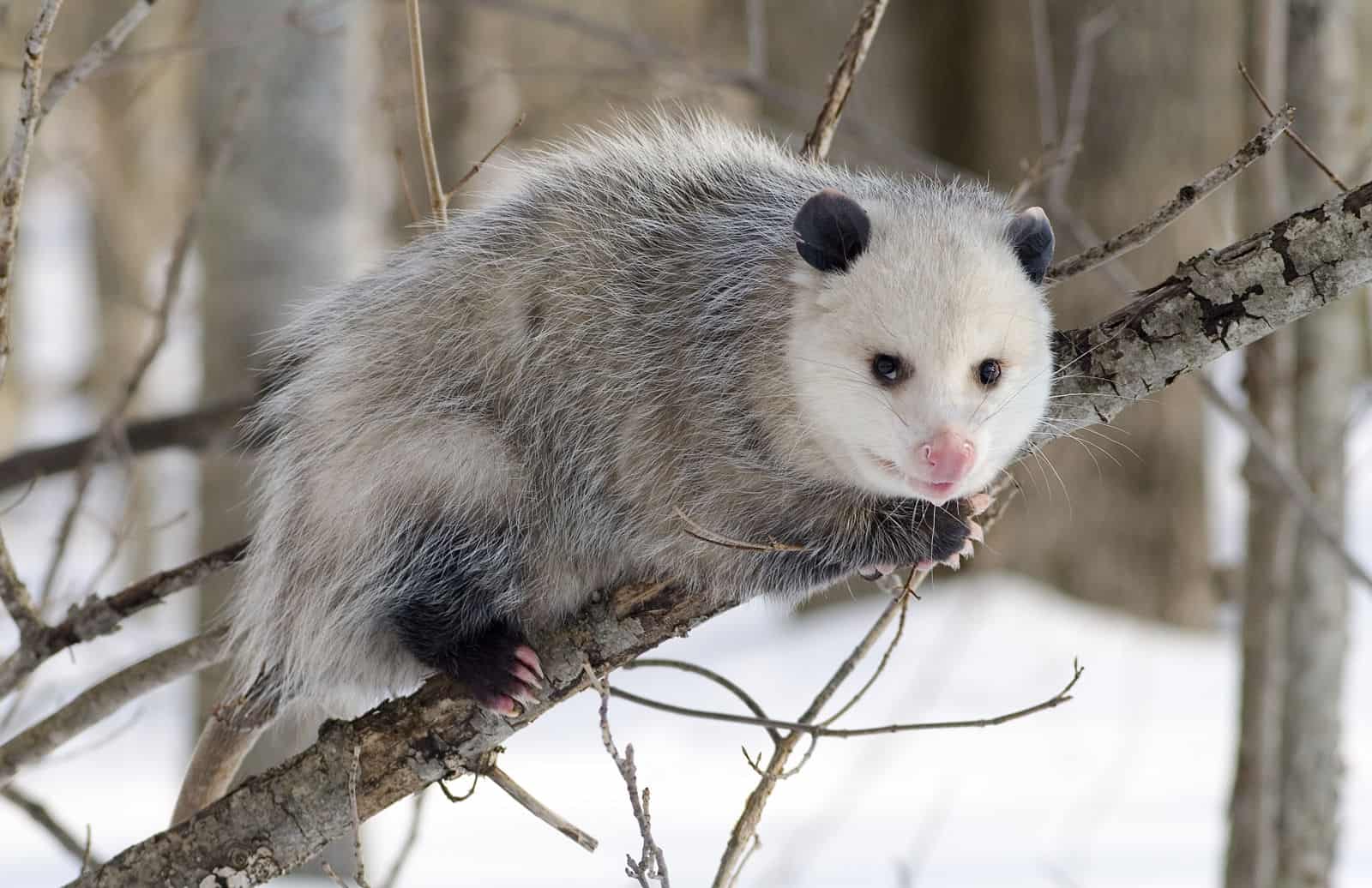
Opossums
General Information
Opossums are nocturnal marsupials with a variety of species globally. Omnivorous, they are excellent at insect and rodent pest control, but will also readily scavenge for food in trash cans and dumpsters. They are skilled climbers and easily gain access to rooftops/attics via tree branches and power lines. Alternatively, they may burrow under sheds or decks to take shelter and protect their young, as they prefer nesting in enclosed spaces, safe from the elements and predators.
Opossums rarely carry rabies due to their low body temperatures and high immunity, but they can host parasites like fleas, ticks, mites, and lice. Flea infestation can lead to the transmission of flea-borne typhus. Opossums have also been known to carry tuberculosis, leptospirosis, tularemia, spotted fever, trichomoniasis, chagas disease, coccidiosis, and more.
If they become a nuisance and removal is necessary, contracting a trained pest professional is essential.
Some species may be federally and/or locally protected. Be sure to work with the appropriate pest or wildlife removal company to ensure that you follow legal guidelines in dealing with vertebrate pests.
Identification
There is one native species of opossum in North America, the Virginia opossum (Didelphis virginiana), commonly known as the North American opossum. They are roughly the size of a house cat, ranging between 24 and 40 inches long, including a 10-12 inch tail length, and 50 teeth. They have long, coarse light to dark gray fur with black or dark brown under fur and a white face. They also have long, pointed snouts with a distinctive pink nose, a scaly, nearly hairless, prehensile tail, and rounded hairless ears. “Playing possum” is another characteristic feature – they will essentially appear to be dead as a nervous shock reaction. They will slow the heartbeat, roll onto their side, go limp, shut their eyes, and let their tongue hang out.
Signs of Infestation
A visual sighting of an opossum is the best method of identifying an opossum pest concern, although they are only active at night and low-light hours. They are messy eaters, so you may find remnants of the previous night’s feeding. Opossum tracks are also distinctive, as they have five finger-like toes on both fore and hind prints and an opposable thumb on each hind foot, which generally will print at an angle of 90 degrees or greater to the other four toes.
Control and Treatment
Opossums are generally beneficial to the ecosystem, but if they become a nuisance, trapping is the best method of removal. It is necessary to consult a pest professional for trapping.
- Trap size 30”x11”x12”
- Baits: Apples, oatmeal cookies, and peanut butter are effective baits
- Dog or cat food, meat, or meat-by products should not be used because domestic cats are highly likely to be caught
- Please check locality for any trapping laws
Other methods to discourage opossums from establishing nests include:
- Remove food sources (secure dumpsters/garbage/composts at night and remove fallen fruit from trees)
- Trim tree limbs to prevent easy access to roofs/attics
- Block access points into basements, attics, etc. and fence-in bottoms of porches/decks
Food Sources
Opossums are omnivorous and will eat a variety of foods including carrion, eggs, ticks/insects, small mammals, fruits, nuts, seeds, birds, frogs, worms, and garbage. Aggressive scavengers, they are attracted to unprotected garbage cans and dumpsters that are left open.
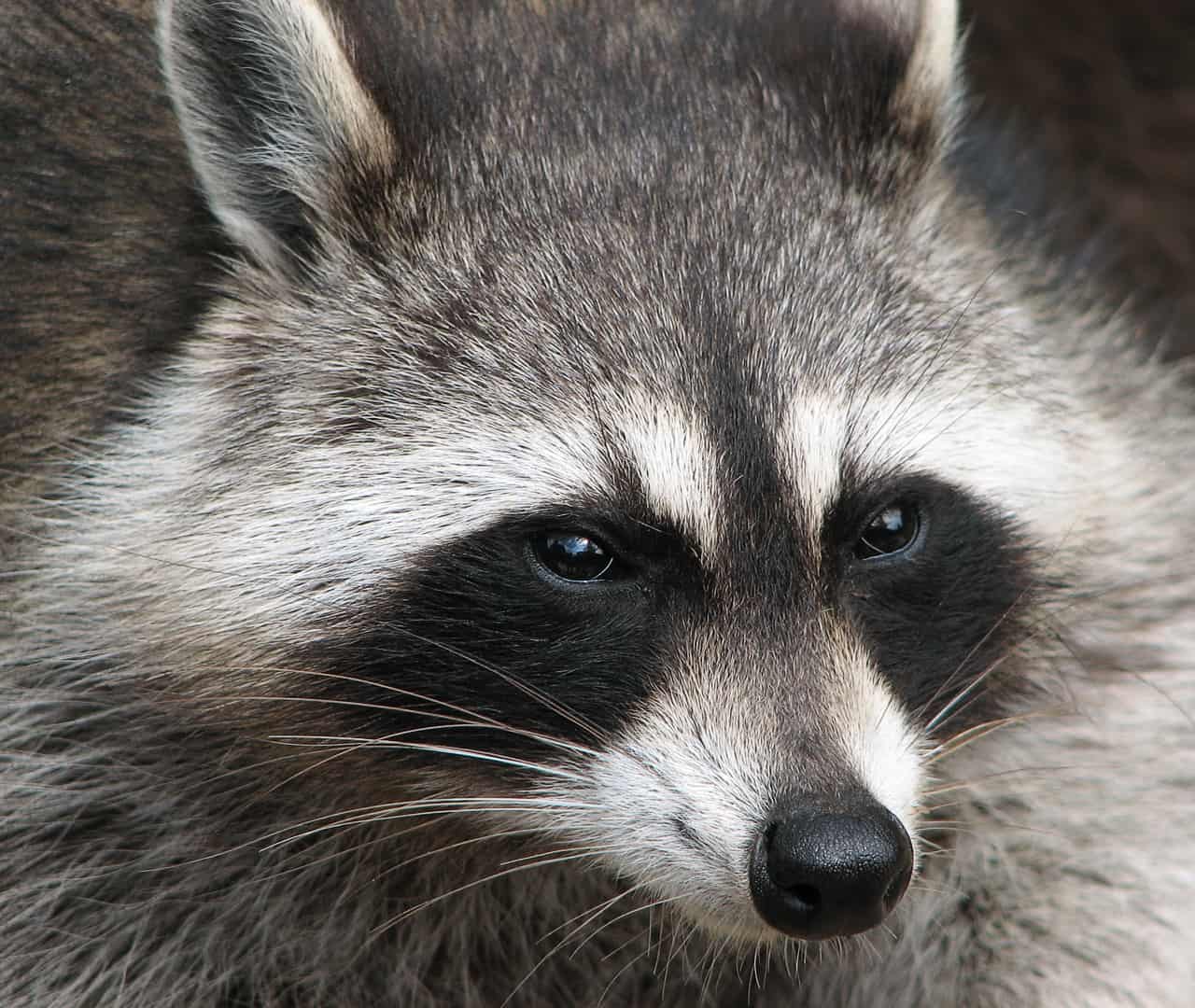
Raccoons
General Information
While raccoons prefer living in wooded areas with access to trees and water; building dens in hollow trees or abandoned burrows, they are also extremely adaptable and can make homes in attics, sewers, barns and sheds. Raccoons often enter attics and chimneys in the spring, right around their breeding season (February to March). They are omnivorous, dexterous, and nocturnal, having been known to roll up freshly laid sod in search of grubs and releasing locks on trash cans and dumpsters in search of food late at night. They can be structurally destructive when trying to gain access to buildings. Further, racoons can carry dangerous diseases, such as rabies, canine distemper, parvoviruses, leptospirosis, salmonella, and roundworms. They can also be infested with ticks, lice and fleas.
Some species may be federally and/or locally protected. Be sure to work with the appropriate pest or wildlife removal company to ensure that you follow legal guidelines in dealing with vertebrate pests.
Identification
There is one species of raccoon found in North America, the common raccoon (Procyon lotor). They have bushy, oily gray fur with a black mask around the eyes, 4-7 black rings around the tail, a pointy snout with a black nose and black front paws. Racoons can be 16 to 30 inches in length, and weigh 10 to 30 lbs.
Signs of Infestation
- Strong smell of feces and/or urine
- Outside damage to your roof/soffits/eaves
- Oily, dark stains around holes in walls or fascia where raccoons enter/exit frequently
- Scratching, scurrying, chattering noises at night in ceilings and walls
- Household pets acting oddly
- Tipped garbage cans/strewn garbage
- Tracks in soft soil/mud in flower beds and gardens
Control and Treatment
- Chimney caps
- Closing/securing openings for exclusion
- Securing trash bins and dumpsters
- Removing/securing food sources
Trapping
- Live trap size: 30”x11”x12”
- Bait: marshmallows, fish-based cat food*, or fried chicken* (*Use a few drops of anise oil with these baits to avoid attracting domestic cats – or just use marshmallows.)
- Please check locality for trapping/releasing laws
Food Sources
Racoons are opportunistic omnivores and will eat human garbage, insects, fruits, nuts and seeds, and smaller animals like frogs and snakes.
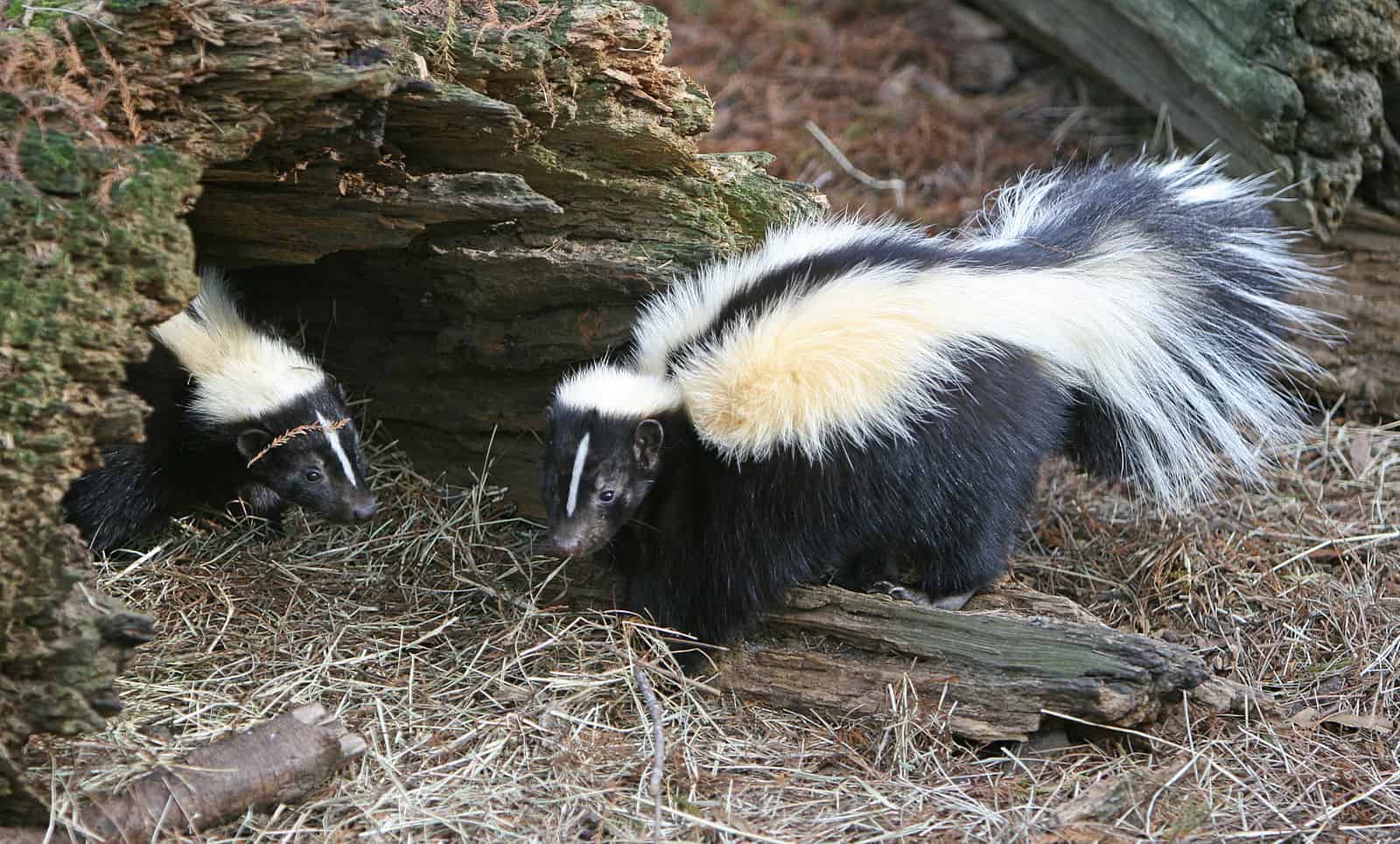
Skunks
General Information
Skunks have very conspicuous black and white coloration and a strong-smelling musk they spray when threatened. They are, unfortunately, easily startled, as they have poor eyesight and mostly hunt by smell and hearing, but they will sometimes give a warning before spraying: stomping their feet and arching their back. Striped skunks have the largest range of the five skunk species in the U.S. and exist in every state except Alaska and Hawaii. Nocturnal omnivore/insectivores, skunks may dig up lawns in search of grubs and can disturb unprotected trash in pursuit of food. Skunks may dig their own dens for their families or enlarge an existing den, such as a groundhog burrow. They are also known to burrow under porches and crawl spaces, and young skunks can sometimes get stuck in window wells. Skunks can carry dangerous diseases, such as rabies, leptospirosis,distemper, zoonoses, canine hepatitis, and intestinal roundworms. They can also be infested with ticks, lice and fleas, which can transmit Lyme disease, anaplasmosis, and ehrlichiosis to humans.
Some species may be federally and/or locally protected. Be sure to work with the appropriate pest or wildlife removal company to ensure that you follow legal guidelines in dealing with vertebrate pests.
Identification
Skunks are stout, small, fluffy animals with stumpy legs. They have small heads, short, pointed snouts, and small black eyes and strong claws for digging. Their most distinctive feature is the white stripes that run along their backs and extend to the tips of their long, fluffy tails.
Signs of Infestation
- 3”- 4” Holes in your turf
- Visible burrow especially under porches
- Telltale odoriferous scent
Control and Treatment
Be sure to work with a pest control professional for removal. Ensure they use COVERED live traps, roughly size 24”x 7”x 8” in size. Make sure that the cover is installed at the time or trap installation as the cover protects and shields from spray.
Bait: Canned fish (sardines), crisp bacon, bananas, or bread coated with peanut butter. Bananas or crisp bacon work best. If sardines are used, place a few drops of oil of anise around the trap so as not to capture domesticated cats.
For skunks trapped in window wells, place a piece of lumber (2” x 4”) in the window well angled up and they will crawl out on their own if you leave them alone. If they do not move on, then see trapping above.
Other methods to discourage opossums from establishing nests include:
- Remove food sources (secure dumpsters/garbage/composts at night and remove fallen fruit from trees)
- Block access points into basements, attics, etc. and fence-in bottoms of porches/decks
- Block abandoned groundhog holes
Remember a skunk’s defense mechanism is caustic odiferous spray!!!
Food Sources
Skunks are omnivorous, eating insects, larvae, vegetables, fruits, grains and garbage.
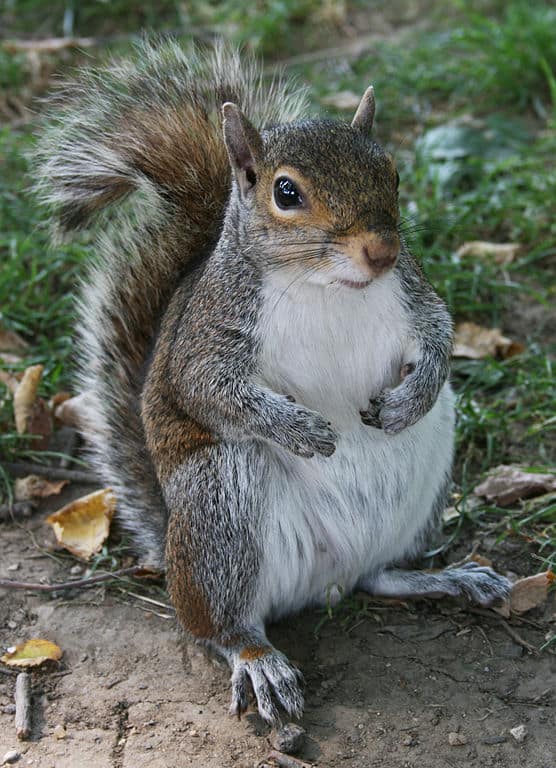
Squirrels
General Information
There are several squirrel species which can cause damage to historic structures (to, for example, exterior wooden architectural details and electrical wiring) and soft metal structures, such as lead garden statuary. Damage caused by squirrels is largely related to their energetic chewing, but can also result from nesting activities, which may attract chewing lice, fleas, ticks and mites which can transfer to people. Some species are federally and/or locally protected. Be sure to work with the appropriate pest or wildlife removal company to ensure that you follow legal guidelines in dealing with vertebrate pests.
Identification
- Eastern Grey Squirrel
The Eastern Grey Squirrel may be grey, reddish-grey, or black in color. It is diurnal (active during the day). They measure 16-20 inches long and 1.25 to 1.75 pounds. The Eastern Grey Squirrel occupies a range of 2 to 7 acres. Eastern Grey Squirrels are known to do damage to electrical wiring, fascia and soffits, and to leave greasy rub marks along frequently traveled routes.
- Red Squirrel
Red squirrels are smaller than grey squirrels, and diurnal (active during the day). They have a red coat and prefer pine forests.
- Southern Flying Squirrel
Southern Flying Squirrels are 8 to 10 inches long with a membrane of skin stretched between front and rear legs, a line of demarcation between upper and lower coat, and a flattened tail. They are nocturnal. In some areas flying squirrels are protected, so it is important to verify species and check local laws pertaining to what actions are legal.
- Delmarva Fox Squirrel
At 18 to 27 inches and 1.75 to 2.25 pounds, the silver grey Delmarva Fox Squirrel is larger and more terrestrial than the Eastern Grey Squirrel. It was delisted from the Endangered Species list in 2015, so check local laws to determine whether it is still protected in your area.
Signs of Infestation
The first signs of a squirrel infestation are usually the squirrels themselves. There may be increased activity around the property, increased population numbers, chewed or damaged entry points (teeth marks), noise, droppings, and damage to insulation, electrical wiring, fascia, soffits, roofs, etc. Squirrels often also leave greasy, dark, rub marks on entry points.
Control and Treatment
Exclusion:
- Exclude at entrances/exits.
- Consider removing bird feeders or using feeders that have squirrel deterrents.
- Post “Do Not Feed the Squirrels” signage.
- Pick up fruit/seeds/acorns from and/or around trees.
- Cut/prune tree limbs away from structures to discourage easy access to rooftops and attics.
Trapping:
- Trap size: 18”x5”x5”
- Baits: Cereal, grains, nuts (peanuts), sunflower seeds, shelled corn, mixed peanut butter and oatmeal, or mixed peanut butter and molasses
- Traps must be checked daily.
- Please check locality for any trapping laws.
Food Sources
Squirrels eat grains, nuts, seeds, berries and fruits, and more, but they have also adapted to living near humans and will happily eat human-food cast-offs, such as old sandwiches and sweet snack foods. Posting signs for patrons to NOT feed squirrels is another possible control technique.
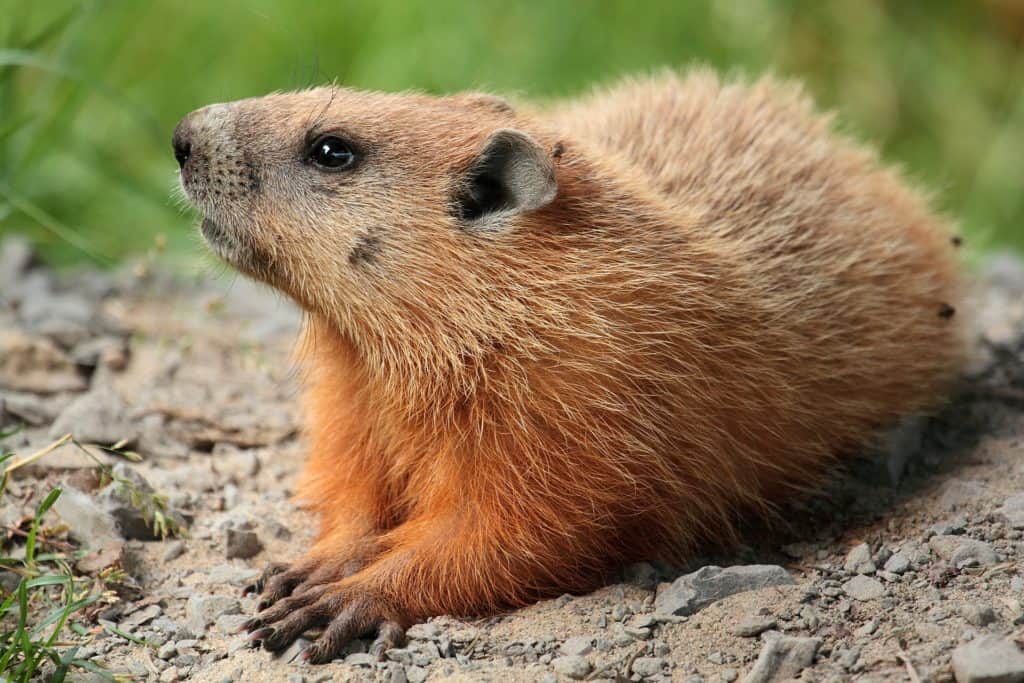
Woodchucks
General Information
Woodchucks, a.k.a. groundhogs, whistle pigs, marmots, are closely related to squirrels. Their chambers can be up to 50 feet long and usually consist of a main entrance, plunge hole, nest chamber, and restrooms. Below are helpful suggestions to make sure your pest control professional is successful. Woodchucks (a.k.a. groundhogs, whistle pigs, marmots), while closely related to squirrels, display very different behaviors and pose very different threats. Woodchucks live in underground burrows which can be up to 50 feet long and consist of several chambers: a main entrance, a plunge hole, a nest chamber, and restrooms. The main problem posed by woodchucks is damage to the landscape, rather than damage to historic structures or collections spaces. Woodchucks, through their burrowing, create hard-to-see holes and pits (up to one foot in diameter) in lawns/grounds which pose tripping hazards for visitors and staff. It is essential to work with a pest control professional to remove woodchucks from a premises. Below are helpful suggestions to make sure your pest control professional is successful. Many species are federally and/or locally protected. Be sure to work with the appropriate pest or wildlife removal company to ensure that you follow legal guidelines in dealing with vertebrate pests.
Identification
Woodchucks have brown and grey fur, small ears, long incisor teeth, and short, strong legs and clawed paws for digging. They often grow up to 20 inches in length, with a flat tail that measures roughly six inches long, and they weigh between six and 12 pounds. They are diurnal (active during the daytime) and herbivorous. Their breeding season is March to April, and hibernation is from November to March. They do not tend to travel far from their dens and are often found near to gardens.
Signs of Infestation
The most common signs of a woodchuck are large holes or pits in the ground which can be 10 to 12 inches in diameter and are usually found close to a tree or the foundation of a building. There are often mounds of dirt surrounding the main entrance hole, although secondary exit holes may not have dirt mounds.
Control and Treatment
Exclusion is not usually a viable solution to woodchuck issues, so trapping is the most effective approach. It is essential to work with a pest control professional to remove woodchucks.
- Recommended live trap size: 36”x11”x12”
- Recommended baits: peaches, apples, strawberries
- Check your locality for any trapping/releasing regulations
Food Sources
Woodchucks are herbivores and like garden veggies (lettuce, carrots, fruits, etc.), tree bark and twigs, ground cover crops and weeds like alfalfa, clover, and dandelions, and insects.
Created 2017, Updated 2022
